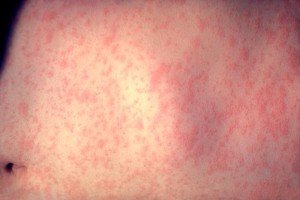After reporting more than 11,000 measles cases during the past year, according to the World Health Organization, the Centers for Disease Control and Prevention (CDC) issued a travel notice for people headed to the Central Asian country of Kyrgyzstan.

Image/CDC
In fact, the CDC reports that cases have dramatically increased in 2015. Many people have been hospitalized, and two children have died.
CDC recommends that travelers to Kyrgyzstan protect themselves by making sure they are vaccinated against measles, particularly infants 6–11 months of age (1 dose of measles vaccine) and children 12 months of age or older (2 doses of measles vaccine). Clinicians should keep measles in mind when treating patients with fever and rash, especially if the patient has recently traveled internationally.
Measles is a highly contagious viral disease that mainly affects children. It is transmitted via droplets from the nose, mouth or throat of infected persons. Initial symptoms usually appear 10-12 days after infection, and include high fever, runny nose, bloodshot eyes, and tiny white spots on the inside of the mouth. Several days later, a rash develops, starting on the face and upper neck and gradually spreading downwards.
Measles can be prevented by immunization. There is no specific treatment, and most people recover within 2-3 weeks. However, measles can cause serious complications, including blindness, encephalitis, severe diarrhea, ear infections and pneumonia, particularly in malnourished children and people with reduced immunity.
Measles is prevented by vaccination.


One thought on “Kyrgyzstan measles outbreak prompts travel notice”